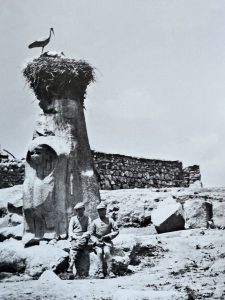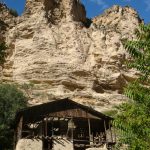Hatti necropolis
South of Çorum, the Hittite site at Alaca Höyük was recorded as along ago as 1835 by the British traveler W.G. Hamilton around Alaca, then a small Anatolian settlement of mud-and-stone houses. The mound was first excavated in 1907, but Atatürk took a particular interest in it as he tried to piece together a suitably heroic history for the new Turkish Republic; consequently in 1937 it was the first site to be systematically excavated on his orders.
Alaca Höyük was occupied long before Hattuşa, and it was here that archaeologists uncovered the graves of a sixteen presumed Hatti kings and queens who were buried here between 2300 and 2000 BC in rectangular plots covered with wood and soil in apparent imitation of houses. Buried with them were statuettes of bulls and stags as well as what are assumed to be sun disccs.
A model of one of these tombs in the excellent Çorum Museum shows that the dead were buried with silver or bronze sun disc ornaments. These would have been carried in processions and made a sound when shaken, suggesting that they were the precursors of the curious çevgens carried by members of the Ottoman Mehter bands.
The most impressive monument here is the Sfenksli Kapı (Sphinx Gate), although these sphinxes, like those at Hattuşa, are actually copies of the originals. Old photos show a huge stork’s nest perched on one of them but this has long since been swept away.
A small museum shows the 15 layers of history represented at the site in a display that looks rather like a termite’s nest but the best of the finds from the site are on display in the Museum of Anatolian Civilizations in Ankara.
Transport info
Getting to Alaca Höyük by public transport is probably more time-consuming than it’s worth.
There are dolmuşes from Çorum to Alaca village and from there to the ruins, but there’s no public transport between Boğazköy (Hattuşa) and Alacahöyük (36km) which is what you really want.
Probably the best bet is to agree a price with a taxi driver to ferry you between the sites with waiting time thrown in (you’ll need plenty of time to do justice to Hattuşa but less for Yazılıkaya and Alaca Höyük).


